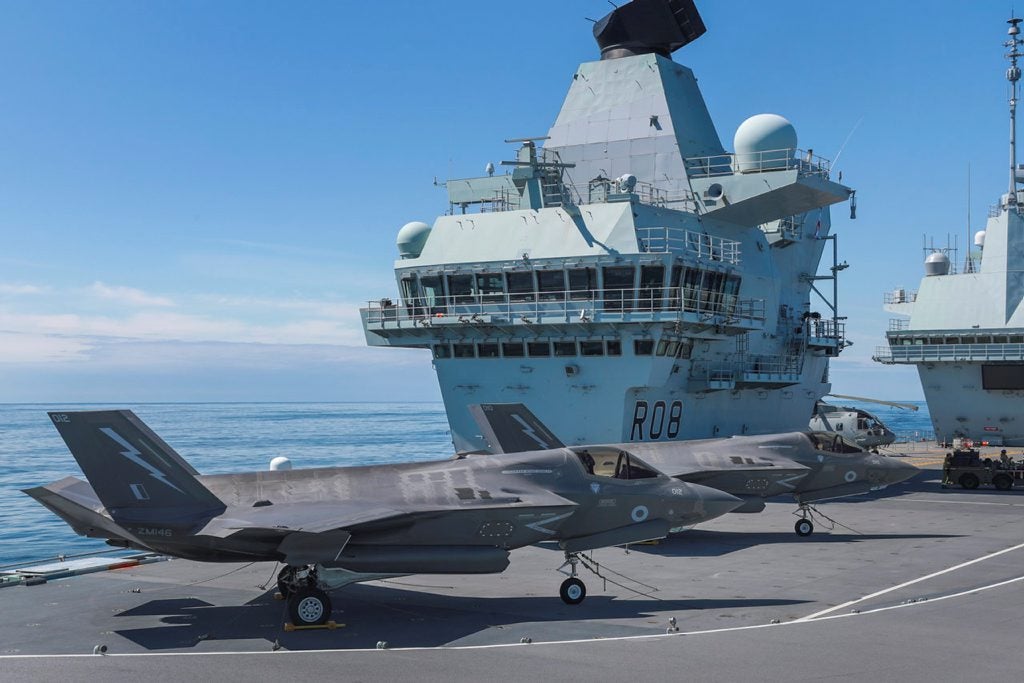
In the report, the NAO says that the Ministry of Defence (MOD) needs to focus its efforts on ‘developing crucial supporting elements’ needed to make full use of Carrier Strike and develop an understanding of the future costs of operating Carrier Strike groups.
The NAO’s report found that work on one element of Carrier Strike, the airborne Crowsnest radar system, was 18 months behind schedule and would not be ready in time for the Carrier Strike’s Initial Operating Capability (IOC) late this year. The NAO added that the timeframe to achieve Full Operating Capability of Carrier Strike in 2023 ‘remains tight’.
The NAO said delays with the radar showed the MOD’s ‘ineffective oversight of its contract with Lockheed Martin’. Delays with the radar were caused by subcontractor Thales ‘failing to meet its contractual commitments for developing equipment and not providing sufficient information on the project’s progress.’ However, the NAO laid criticism at the MOD and Lockheed Martin’s door for not becoming aware of the problems until it was too late.
The NAO added that the MOD has made slow progress on its plans to acquire three new Fleet Solid Support Ships designed to support Carrier Strike operations. Plans to acquire the new vessels were put on ice last year after the MOD said none of the bids represented value for money. The NAO said the pause to the project would mean the Fleet Solid Support Ships will not be available until the late 2020s.
Responding to the report a Royal Navy spokesperson told Naval Technology: “We welcome the NAO’s report and acknowledgement that considerable progress has been made on the Carrier Strike programme since their last report in 2017.
“Carrier Strike is a complex challenge, which relies on a mix of capabilities and platforms. We remain committed to investing in this capability, which demonstrates the UK’s global role.
“Despite the disruptions of COVID-19, the Carrier Strike Group is on track for its first operational deployment.”
Another criticism from the NAO report was that the MOD does not know how much Carrier Strike will cost to operate over its 50-year service life. The report found that the MOD has yet to make ‘important decisions’ on capabilities that would affect Carrier Strike including how to extend or replace the Merlin helicopter fleet when they reach their end-of-service life in 2023.
Commenting on the report, NAO head Gareth Davies said: “The MOD has made good progress with the big-ticket items needed to deliver Carrier Strike, such as the carriers, the first squadron of jets and the new infrastructure. But it must pay much greater attention to the supporting capabilities needed to make full use of Carrier Strike.
“The MOD also needs to get a firmer grip on the future costs of Carrier Strike. By failing to understand their full extent, it risks adding to the financial strain on a defence budget that is already unaffordable.”
F-35 and Carrier Strike
The UK has said it intends to buy a total of 138 Lockheed Martin F-35 Joint Strike Fighters, however, the MOD has so far ordered 48 and not yet committed to buying any more. The NAO added that due to financial pressure receipt of seven of the 48 jets has been deferred until 2025.
The NAO said: “Since the NAO last reported in 2017, the approved cost of the Lightning project has increased by 15% from £9.1 billion to £10.5 billion because of additional expenditure on system upgrades, integration of UK weapons and sustainment costs.
“The MOD is planning to review the number and types of jets it needs, but buying fewer aircraft would affect how Carrier Strike can be used.”
So far the MOD has spent £6n of its approved £10.5bn budget for the fleet of F-35B aircraft. As of April 2020, the UK has 18 F-35s and two aircraft carriers, the first-in-class ship HMS Queen Elizabeth recently completed further sea trials and has been certified to undertake Carrier Strike operations ahead of its maiden deployment next year, which is expected to be a freedom of Navigation exercise in the Pacific.
After achieving IOC in late 2020, the next milestone for the programme is to achieve full operating capability in 2023, which is one carrier carrying two operational F-35 squadrons to a total of 24 fighters.
The NAO report added: “The Department [MOD] has not yet made funding available for enough Lightning II jets to sustain Carrier Strike operations over its life. From 2015, its intention has been to buy 138 Lightning II jets, which will sustain Carrier Strike operations to the 2060s. The Department initially ordered 48 jets but has not yet committed to buying any more.”
What will a UK Carrier Strike Group look like?
The minimum mix of aircraft, ships and submarines to operate a Carrier Strike Group is listed as one Queen Elizabeth-class carrier, one Type 45 Destroyer, one Type 23 Anti-Submarine Warfare Frigate (due to be replaced by the Type 26), an Astute-class Attack Submarine, A Fleet Solid Support Ship, a fleet tanker, alongside Merlin helicopters and one squadron of 12 F-35B aircraft.



